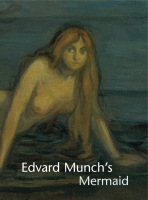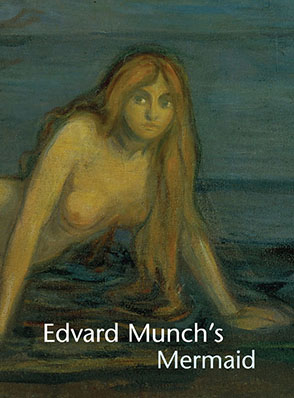Edvard Munch's Mermaid
John Zarobell, and Shelley Langdale
Edvard Munch (1863–1944) has attained lasting fame for paintings and prints—above all The Scream— that express the isolation and anxieties of the modern condition. Recently, the Philadelphia Museum of Art acquired a large Munch painting, Mermaid, little known outside a small circle of experts because it had never been displayed in museums or galleries. To introduce this important work to the public, the Museum has organized an exhibition that presents Mermaid alongside related paintings, drawings, and prints.
- Description
- Bio
- Table of Contents
- Subjects
Edvard Munch’s Mermaid, which accompanies the exhibition, provides the first comprehensive discussion of the painting’s history and significance. The Norwegian industrialist and collector Axel Heiberg commissioned Mermaid from Munch in 1896, when the artist was living in Paris, absorbing the city’s intellectual life, expanding his work as a printmaker, and extending his activities to new realms, such as designing the theater sets and program for Henrik Ibsen’s play Peer Gynt.
The first two essays in this book from the Philadelphia Museum of Art situate Mermaid, Munch’s first decorative painting, within the rich ferment of this period in his life. The painting’s Norwegian imagery, Symbolist ethos, and Art Nouveau influences are explored even as its relationship to Munch’s printmaking of 1896–97 and other artistic activities is elucidated. Mermaid was removed from Heiberg’s house in 1938 and was converted by a restorer from a trapezoidal format to a standard rectangle. The final essay discusses the changes to the painting in light of Munch’s highly personal and complex views on the alteration of his works.
Edvard Munch’s Mermaid reproduces all the prints, drawings, and paintings in the exhibition at the Philadelphia Museum of Art, September 24–December 31, 2005.
John Zarobell is Assistant Curator of European Painting Before 1900 at the Philadelphia Museum of Art and Assistant Curator of the Rodin Museum.
Shelley Langdale is Assistant Curator of Prints and Drawings at the Philadelphia Museum of Art.
Mark Tucker is Vice Chair of Conservation at the Philadelphia Museum of Art.
Suzanne Penn is Conservator of Paintings at the Philadelphia Museum of Art.
Contents
1. A Year in Paris: Edvard Munch’s Mermaid
John Zarobell
2 Edvard Munch: Graphic Revelations in Paris, 1896-97
Shelley Langdale
3. The 1938 Alteration of Edvard Munch’s Mermaid: Circumstances, Implications, and Challenges
Mark Tucker and Suzanne Penn
Mailing List
Subscribe to our mailing list and be notified about new titles, journals and catalogs.




